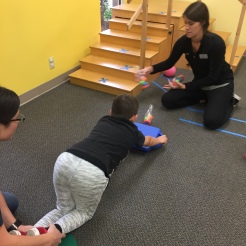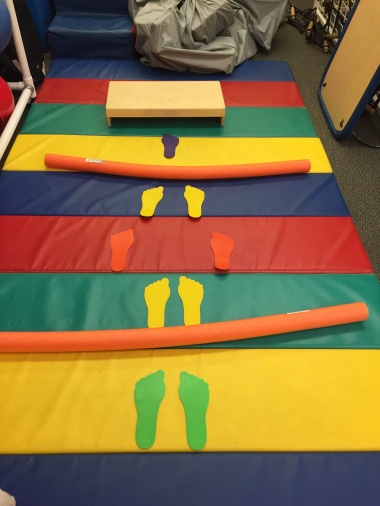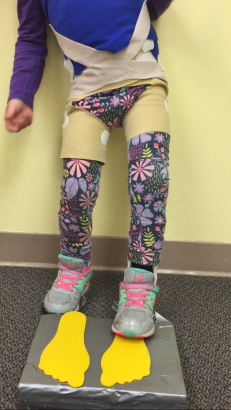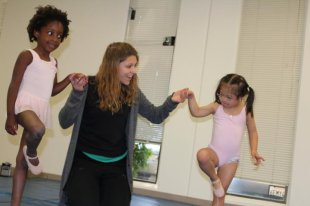
Do any of you remember doing wheelbarrow races as a child? I do! I remember thinking it was hysterical that someone was holding my feet and I was racing someone else on my hands. Well, as much fun as that was, wheelbarrow walking is actually a great tool to incorporate with kids to help them get and stay strong.
Wheelbarrow walking works on strengthening the arms and the core. It can also support coordinated activity because of the need to walk reciprocally on their hands, while keeping their head up to see where they are going, and keeping the core muscles turned on so that the person holding their feet can better support them.
I am a big fan of multi-piece toys such as puzzles and shape sorters. They naturally build repetition into an activity. For instance, you can put the puzzle at one end and the pieces at another end. Place one puzzle piece on your child’s back just like they were a wheelbarrow picking up a load. Then have them walk on their hands to the other end to put the piece in the puzzle. Turn around and head back for the next piece. Keep repeating until all the pieces are replaced.
So how do you vary this by child? That’s easy!
- Distance to walk – Start with shorter distances. If they are doing really well you can increase the distance by moving the puzzle board just a little further away.
- Number of repetitions – Start with carrying just one piece back at a time. If they seem to be tiring, start adding more than one piece to the wheelbarrow. This way they still complete the puzzle but you have decreased the number of repetitions.
- Where you are holding them – The closer to their arm pits you provide support, the easier it is for them. The closer to their ankles that you provide support, the harder it is for them. Just like goldilocks and the three bears, you want to hold them in just the right spot. This means that they can walk on their hands without letting their belly sag towards the ground. If you see their belly sagging (or back arching) you may want to move closer to their arm pits. Once they have mastered keeping their core strong, you can slowly move closer towards the ankles.
There are other variations to make this fun besides just completing a puzzle or a shape sorter. Here are a few ideas I had:
- Treasure hunt – Start with a treasure list and have the items hid in the room that you are in. Have them walk on their hands to collect the treasure. They can hold the items in the ‘wheelbarrow’ while they collect each of them.
- Race track – Create a race path that is clearly marked and use a stop watch to see how fast they can get around the race track. If they have to pause on the track it’s like taking a pit stop. Clearly, they’ll want to take less pit stops to get faster times. Be careful they aren’t going so fast that they start to sag at their core.
- Staying in place – Rather than walking on their hands, have them assume the position and put papers with different colors or letters or numbers in front and to the side of them. Call out a color (or number or letter) and have them use their hand to touch it. You can get tricky by telling them what hand to touch it with (similar to twister).
- Going backwards – You can do almost any of the above ideas backwards. It’s a great way to make the activity novel. You can also combine forward and backwards to make it extra tricky!
Since you are the one that will be helping, you want to make sure to take care of your back as well. Be careful that you aren’t bending over to support them. Use a rolling stool or a scooter board, or walk on your knees (but I would recommend knee pads if you are going to be doing this a lot).






















